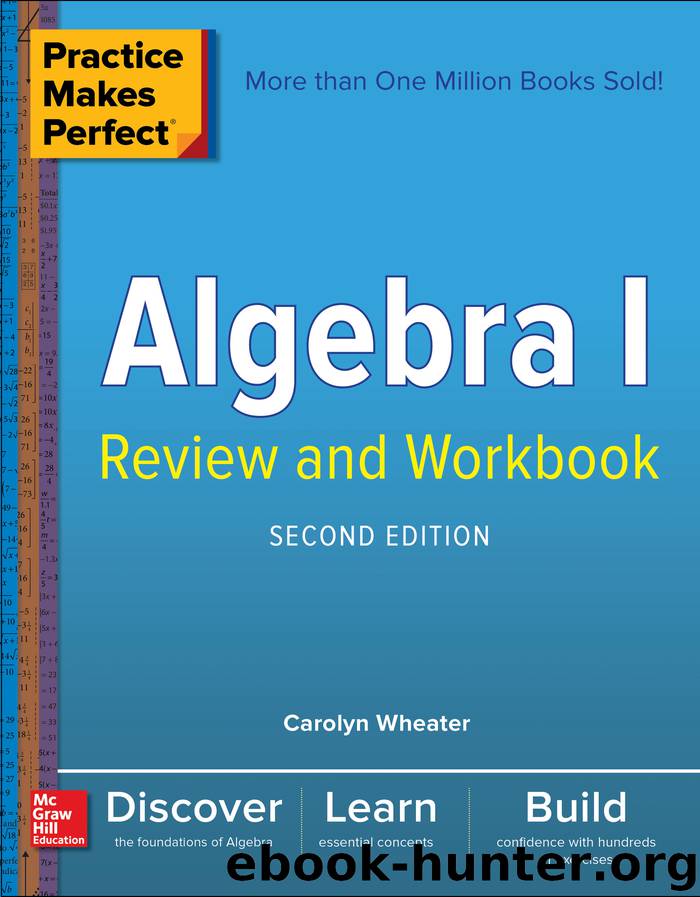Practice Makes Perfect Algebra I Review and Workbook by Carolyn Wheater

Author:Carolyn Wheater
Language: eng
Format: epub
Publisher: McGraw-Hill Education
Published: 2018-01-06T05:00:00+00:00
The two solutions that are typical of quadratic equations come from that ± sign.
The discriminant
One portion of the quadratic formula, called the discriminant, can give you useful information about the number and type of solutions your equation has. The radicand, b2 − 4ac, tells you whether you have one real solution, two real solutions, or no real solutions, and sometimes that’s all you need to know.
If b2 − 4ac is positive, the equation has two real solutions. You have a positive number under the radical, so you get the positive and the negative square root and produce two solutions.If b2 − 4ac equals 0, the positive and negative square roots are both 0, so you end up with only one solution, This is sometimes called a double root, since it really is two solutions that are exactly the same. If b2 − 4ac is negative, you know it’s impossible to find the square root of a negative number in the real numbers. (Later in your math career, you’ll learn about a set of numbers larger than the reals, where negative numbers do have square roots.) So if the discriminant is negative, there are no real solutions.
You can get one more bit of information from the discriminant. If the discriminant is positive and it’s a perfect square, the two solutions will be rational numbers, but if the discriminant is positive and not a perfect square, the two solutions will be irrational.
Download
This site does not store any files on its server. We only index and link to content provided by other sites. Please contact the content providers to delete copyright contents if any and email us, we'll remove relevant links or contents immediately.
The Art of Coaching Workbook by Elena Aguilar(50130)
Trainspotting by Irvine Welsh(21050)
Twilight of the Idols With the Antichrist and Ecce Homo by Friedrich Nietzsche(18312)
Fangirl by Rainbow Rowell(8807)
Periodization Training for Sports by Tudor Bompa(7936)
Change Your Questions, Change Your Life by Marilee Adams(7389)
This Is How You Lose Her by Junot Diaz(6463)
Asking the Right Questions: A Guide to Critical Thinking by M. Neil Browne & Stuart M. Keeley(5369)
Grit by Angela Duckworth(5303)
Red Sparrow by Jason Matthews(5204)
Paper Towns by Green John(4812)
Room 212 by Kate Stewart(4745)
Ken Follett - World without end by Ken Follett(4453)
The Sports Rules Book by Human Kinetics(4087)
Housekeeping by Marilynne Robinson(4075)
Double Down (Diary of a Wimpy Kid Book 11) by Jeff Kinney(3941)
Papillon (English) by Henri Charrière(3924)
The Motorcycle Diaries by Ernesto Che Guevara(3796)
Exercise Technique Manual for Resistance Training by National Strength & Conditioning Association(3791)
